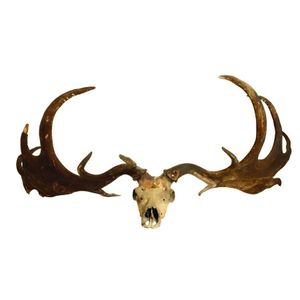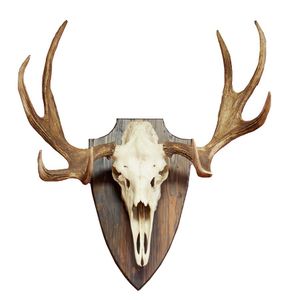Batak Bronze Seahorse Vessel with Human Figures
You must be a subscriber, and be logged in to view price and dealer details.
Subscribe Now to view actual auction price for this item
When you subscribe, you have the option of setting the currency in which to display prices to $Au, $US, $NZ or Stg.
- Foliate - Decorated with leaves or leaf-like forms.
- Zoomorphic - Objects made having the shape, form, or likeness of an animal. For example, the Hindu god Ganesha has the head of an elephant.
The term is also applied to furniture made from animal parts. Examples are chandeliers, hallstands and chairs made from deer antlers and umbrella stands, ice buckets and other objects made from an elephant's foot. - Bronze - An alloy of copper and tin, traditionally in the proportions of about 9 parts of copper to 1 part of tin.
The discovery of bronze in Western Asia in the 4th century enabled people to create metal objects which were superior to those previoulsy possible because of its strength and hardness, and it has been used throughout the world for weapons, coins, tools, statuary and other decorative items.
It is very fluid in a molten state, and its hardness, strength when set, and non-corrosive properties makes it most suitable for casting sculpture. - Patination / Patina - In broad terms, patination refers to the exterior surface appearance of the timber, the effect of fading caused by exposure to sunlight and air over the course of a century or more, changing the piece to a soft, mellow colour.
As patina is very difficult to replicate, it is one of the most important guides to determining the age of furniture.
Patina is also the term applied to the bloom or film found on old bronzes due to oxidisation. - Incised - A record of a name, date or inscription, or a decoration scratched into a surface, usually of a glass or ceramic item with a blunt instrument to make a coarse indentation. Compare with engraving where the surface is cut with a sharp instrument such as a metal needle or rotating tool to achieve a fine indentation.
This item has been included into following indexes:
Visually similar items

An oak cartouche shaped antler hat and coat wall rack, French, 19th century. 71 x 47 cm

A set of extinct Irish elk horns and skull, measuring 3.2m across; the impressive horns with some old damage and restoration, pin fittings to the skull. Note: For the greater part of the 20th century these horns have been in the possession of Major Robert

Scottish hallmarked sterling silver Victorian pair of open salts with scalloped bowls & scrolled edging, two feathered handles on four legs with an etched Jamesons family crest 'Sine Metu'. Glasgow, 1897, maker R & W Sorley length 14.5 cm weight 248g

An antique French deer antler, mounted on original back. The shield 71 cm high, the antlers 100 cm wide
